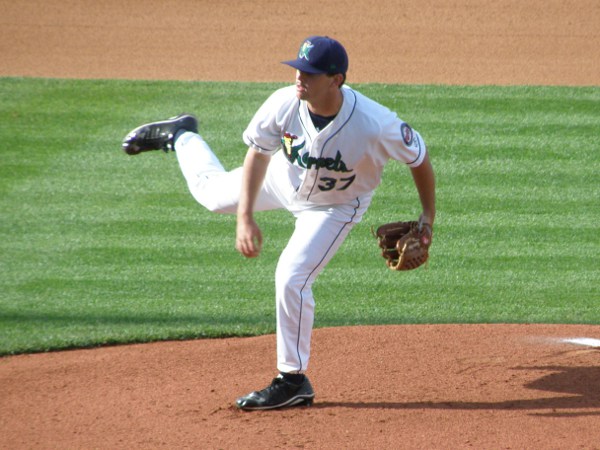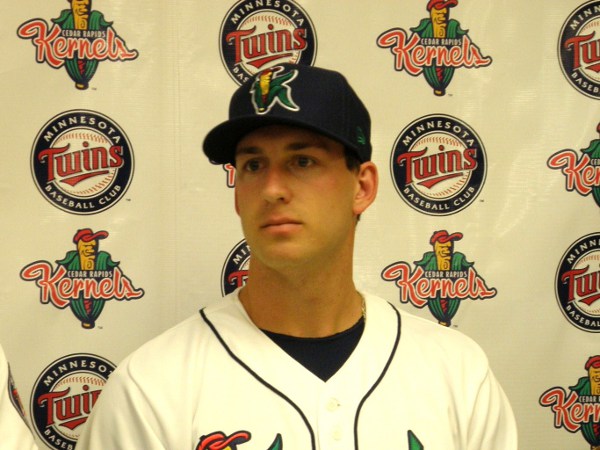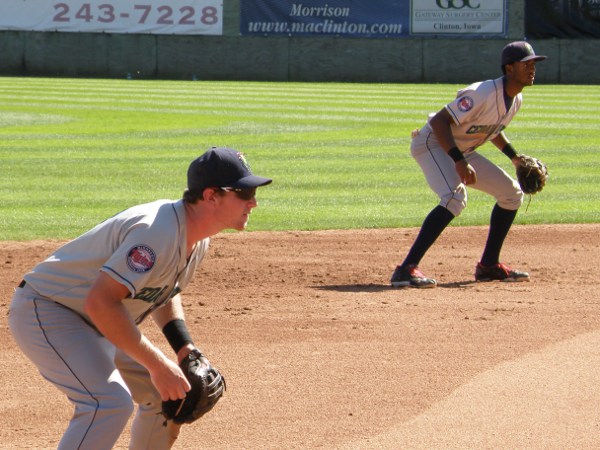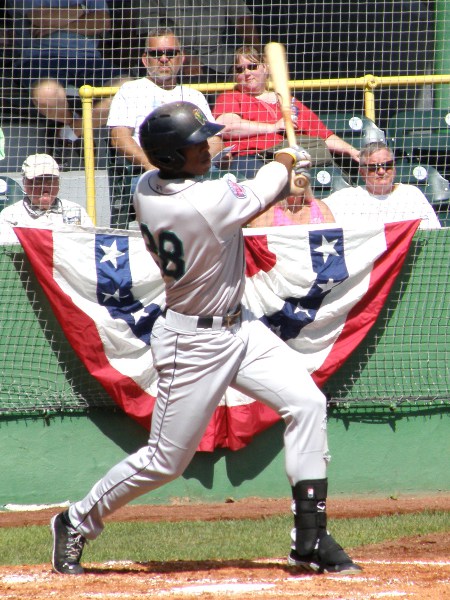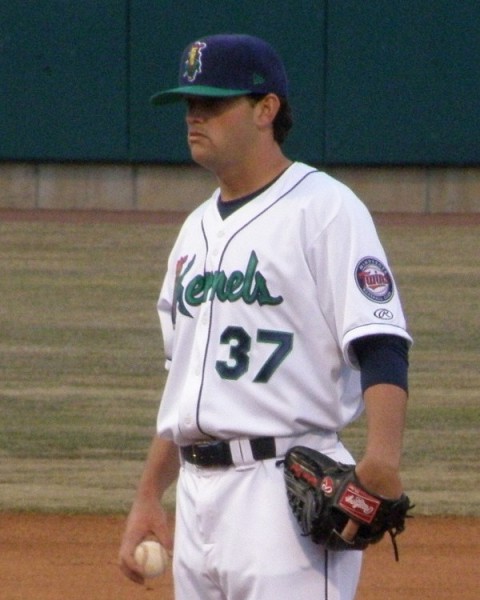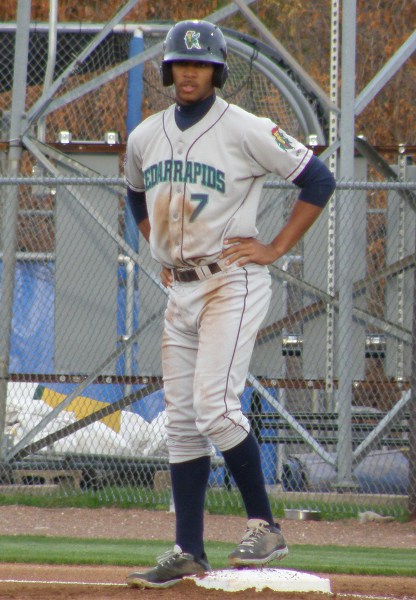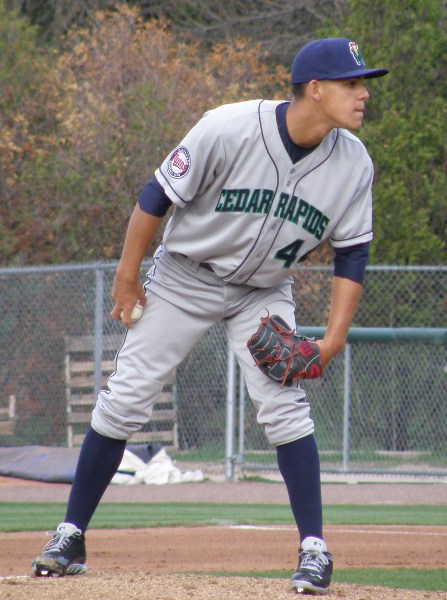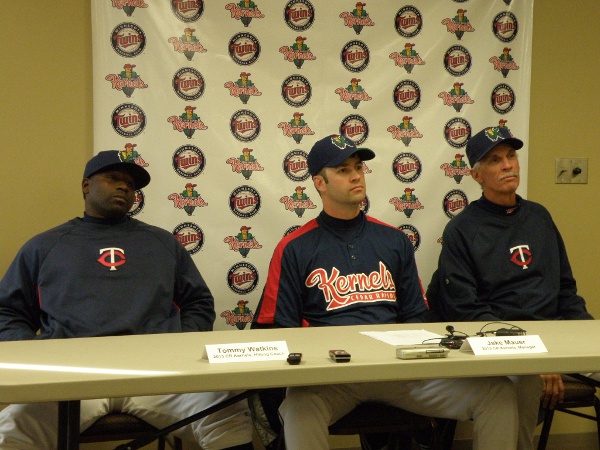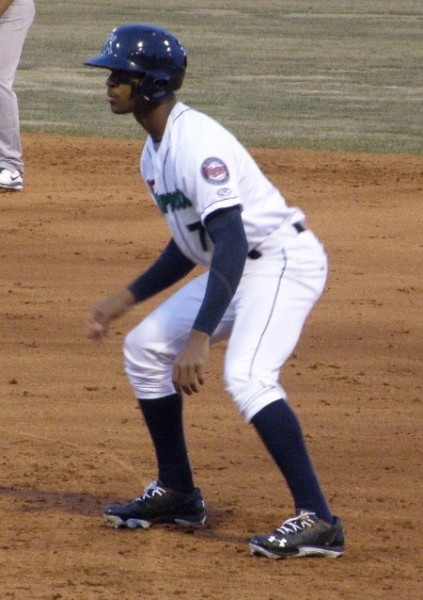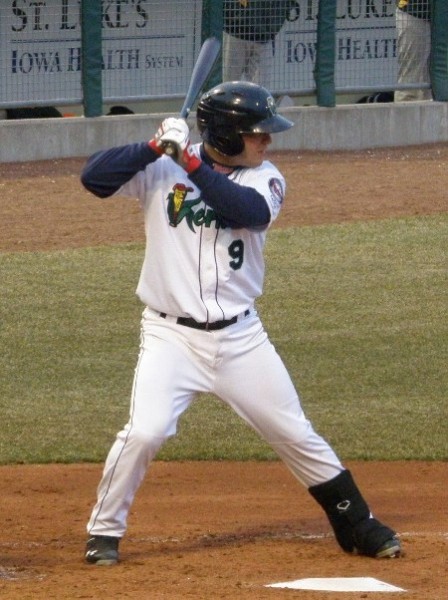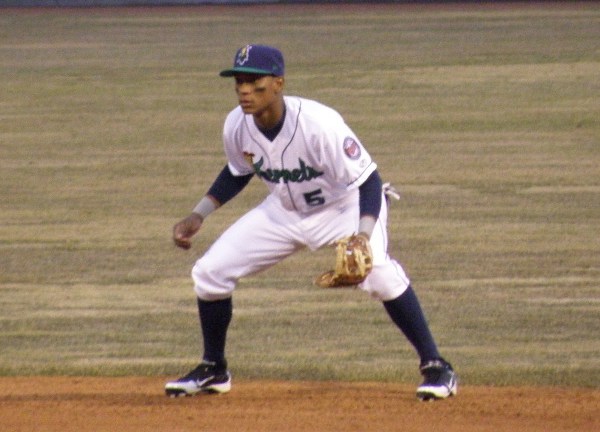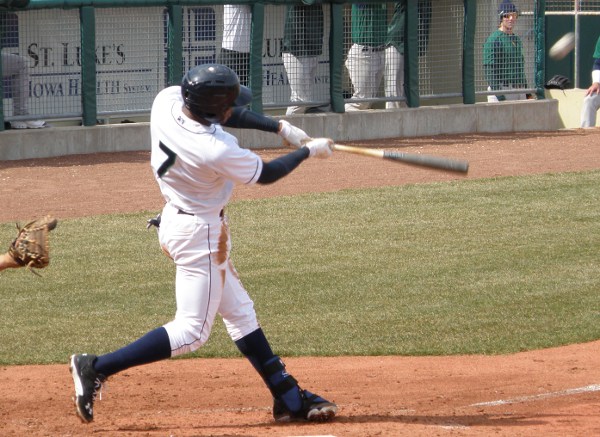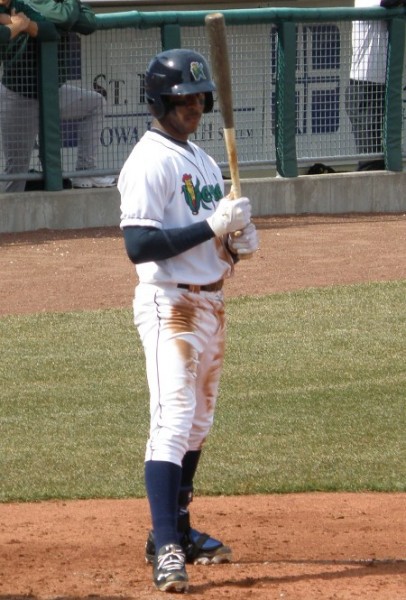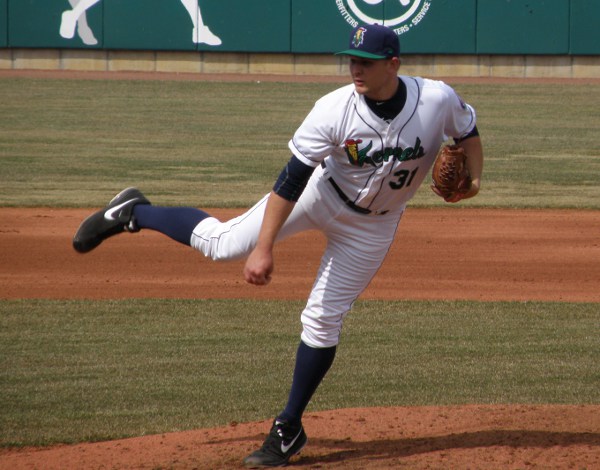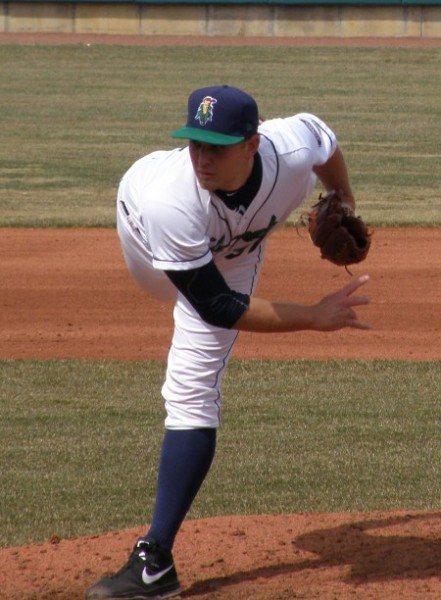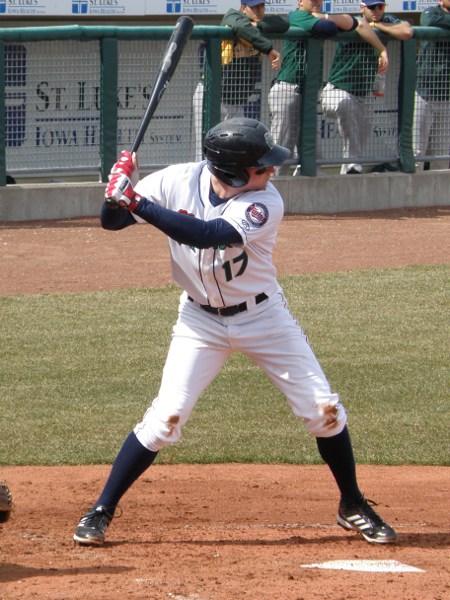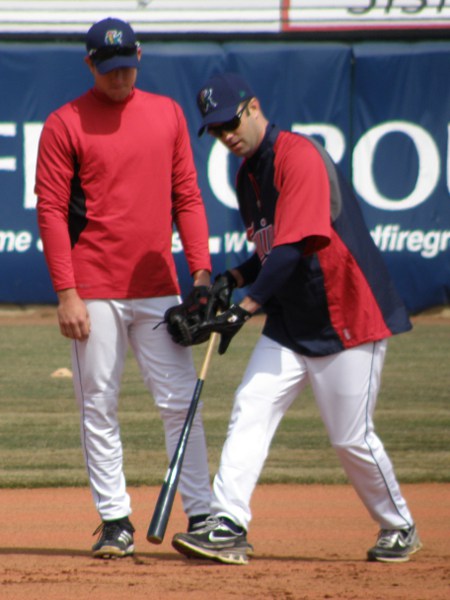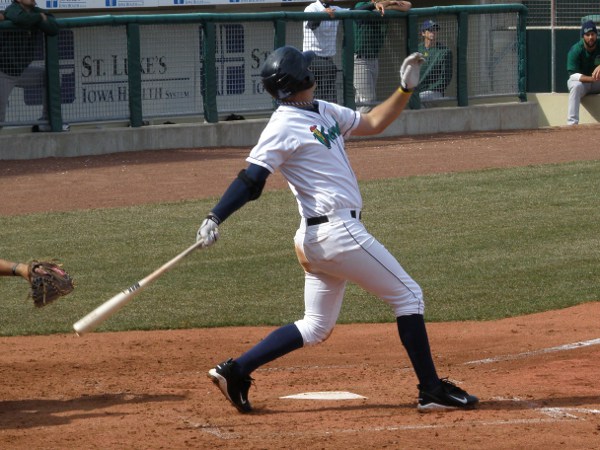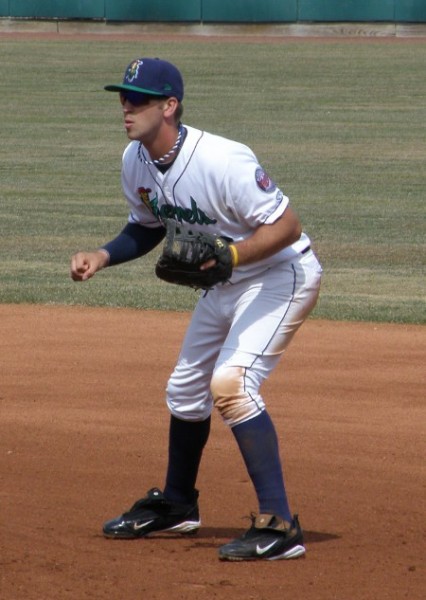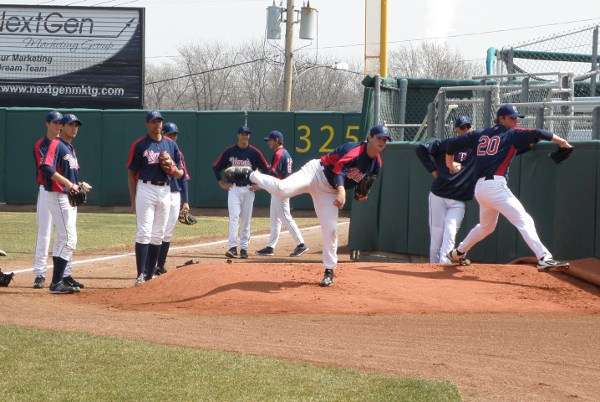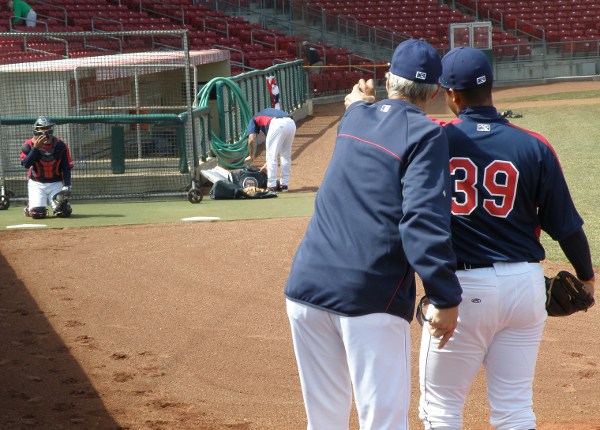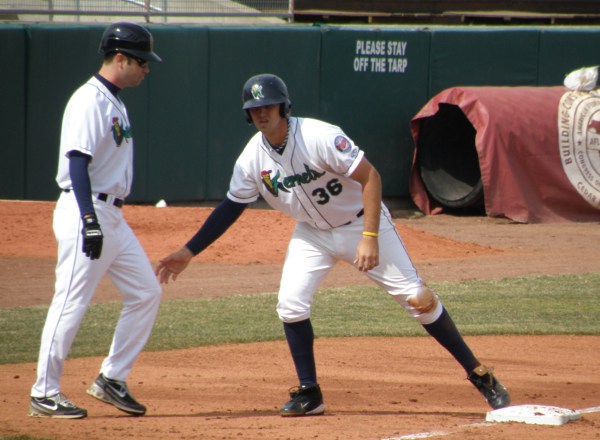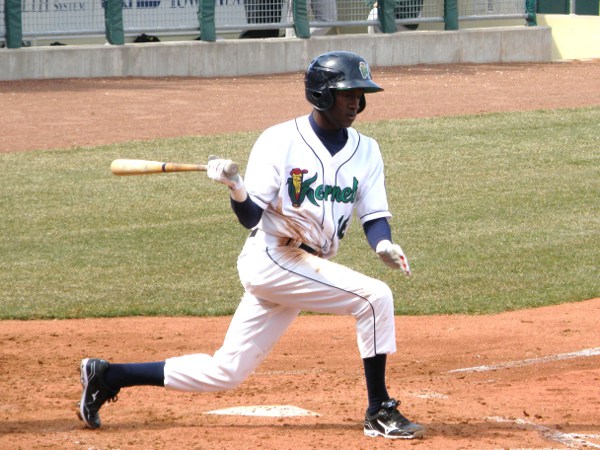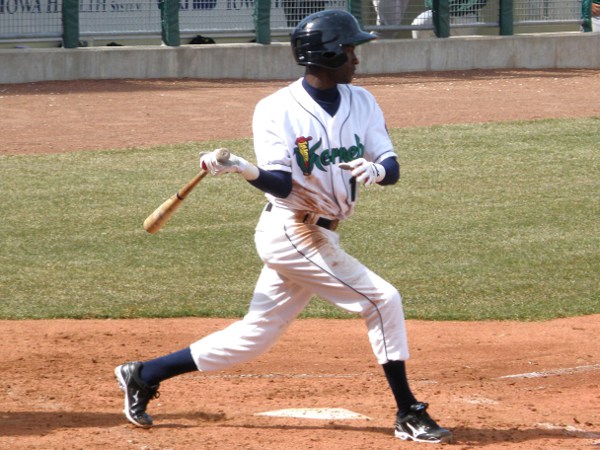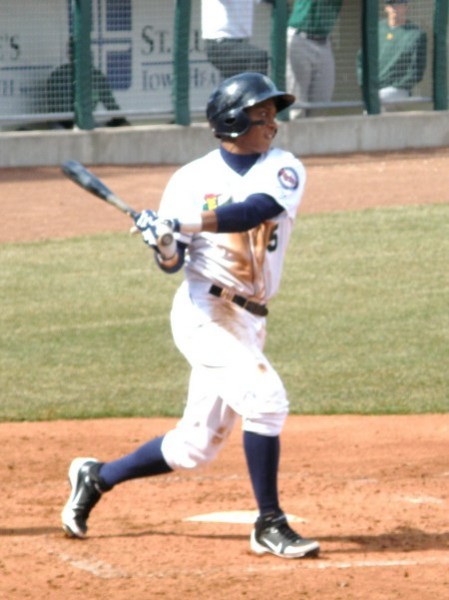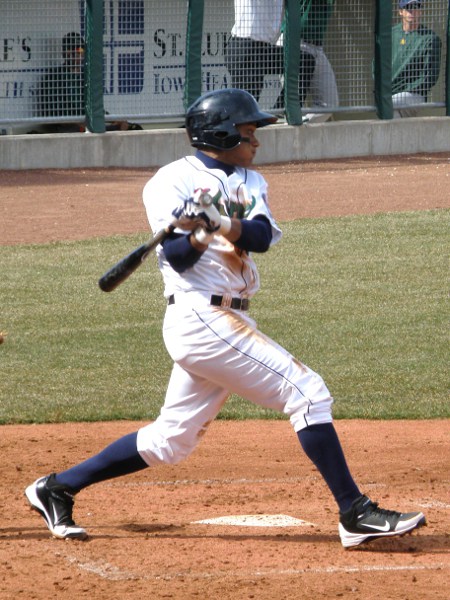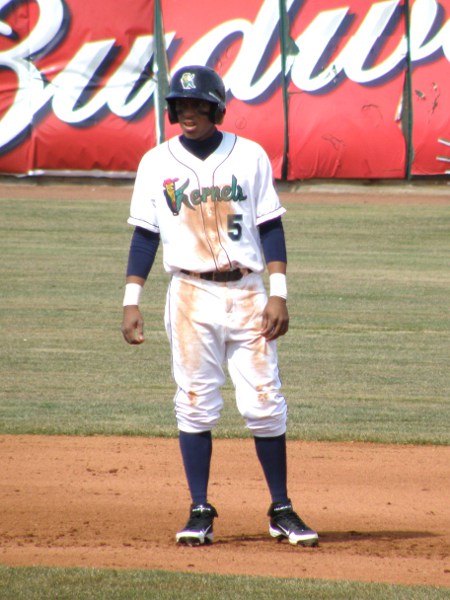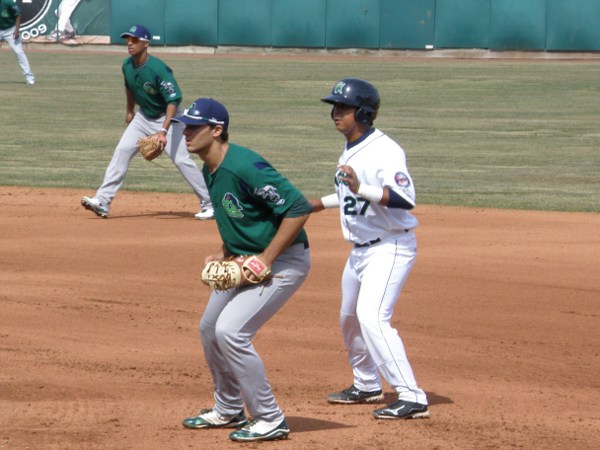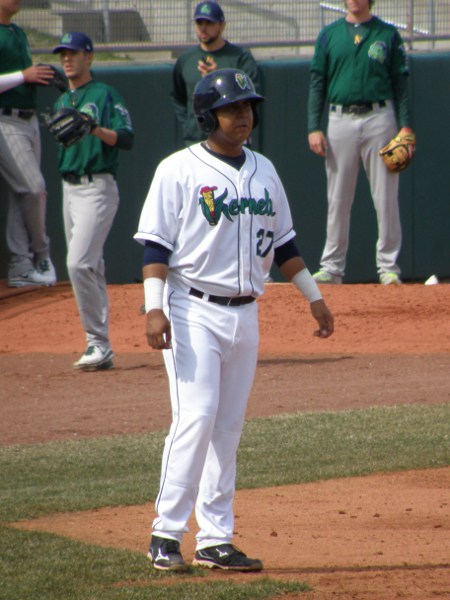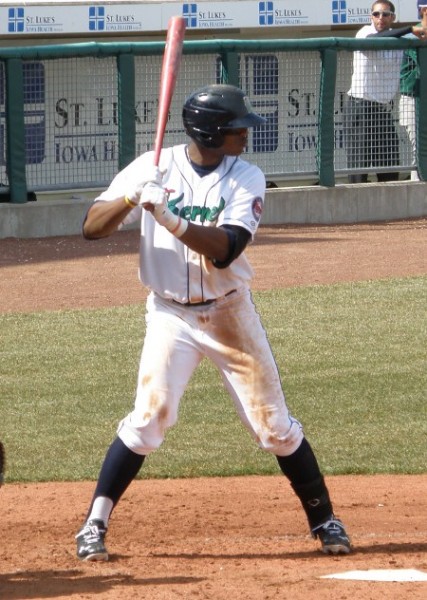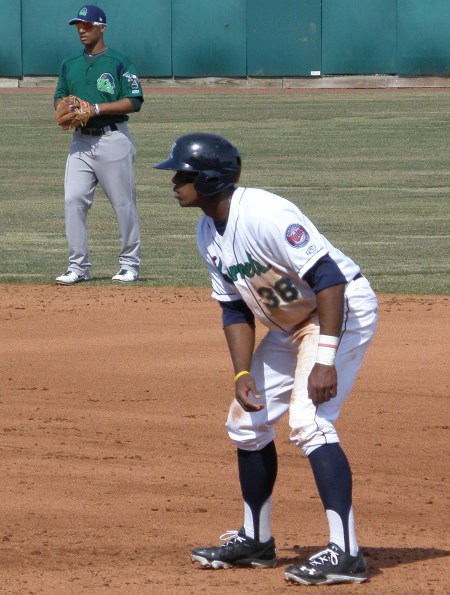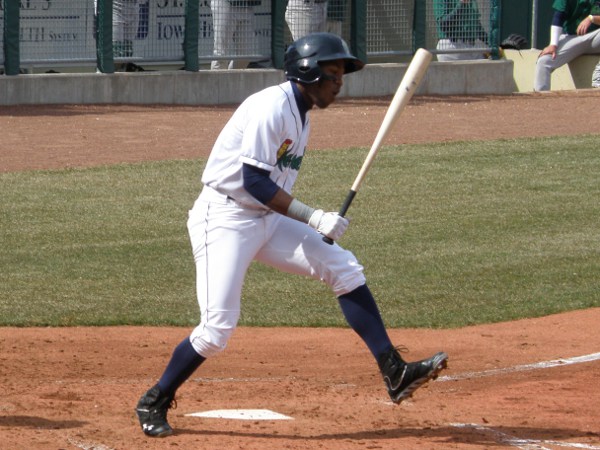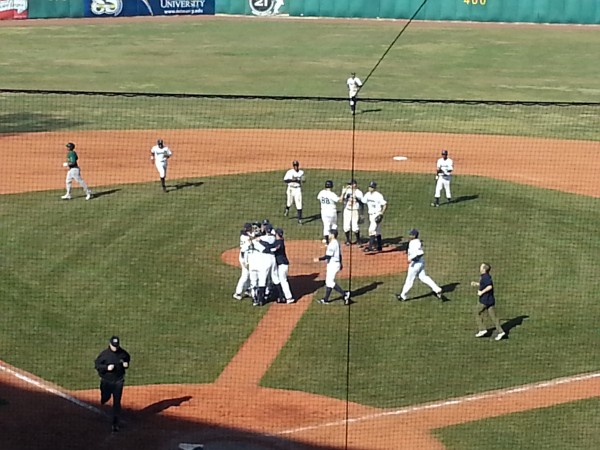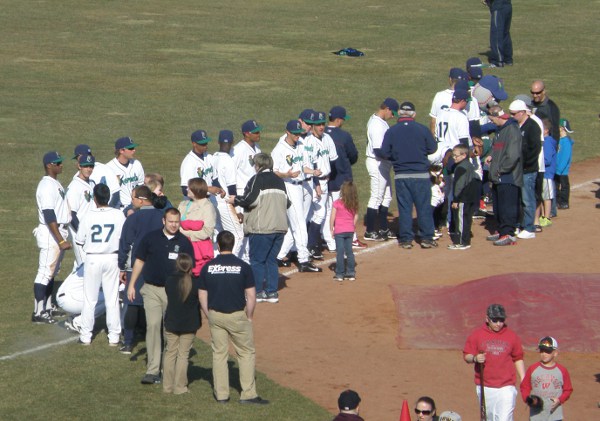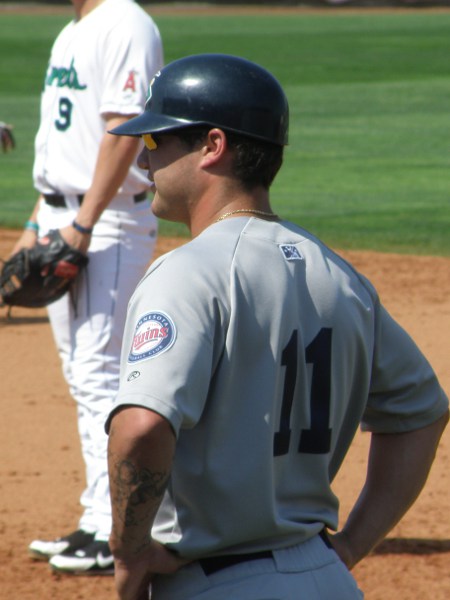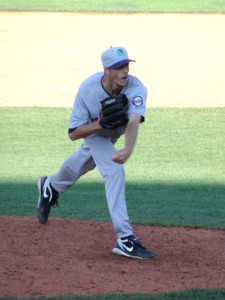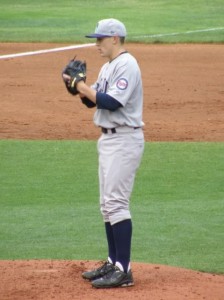In mid-June, after a brutal first half to their Midwest League season, the Cedar Rapids Kernels limped in to the MWL’s All-Star break with a 31-39 record, not only 14 games behind Western Division leader Kane County, but also 7.5 games behind the Burlington Bees.
The latter is important because, in the world of Class A minor league baseball, seasons are split in to two halves, with the first and second place teams in each division, each half-season, earning berths in the postseason playoff series.
Kane County and Burlington snatched the MWL West spots in the first half, leaving Cedar Rapids, Quad Cities, Clinton, Beloit, Peoria and Wisconsin to slug it out in the second half for two more spots, with each team starting with fresh 0-0 records on June 19.
With Peoria, Wisconsin and Quad Cities all assembling winning records in the first half, it was logical to assume that those three teams would contend for the Western Division’s two second-half playoff spots – and they have been doing just that.
Entering Wednesday, Peoria and Quad Cities were tied for second place in the Division’s second-half standings, trailing Kane County by just one game, and Wisconsin is two games back.
Clinton and Beloit have repeated their first-half fortunes, each at least 11 games under .500 and filling the final two spots in the standings, as they did in the first half.
And then there’s the Cedar Rapids Kernels.
Rather stealthily, manager Jake Mauer’s Kernels have turned around what, as recently as three weeks ago, looked likely to become a lost season.
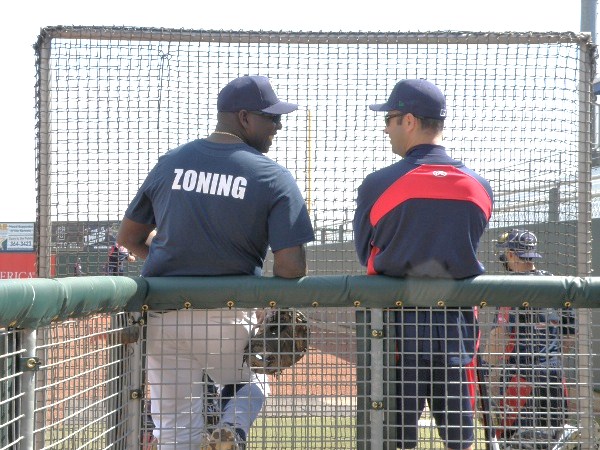
The Kernels lost four of their first five series to begin the second-half schedule and had compiled just a 6-11 second-half record through July 6.
They haven’t lost a series since.
Cedar Rapids has taken six consecutive series, against six different clubs, while putting together a 15-5 record in that time and launching themselves in to a second place tie with Peoria and Quad Cities, just one game behind Division leader Kane County in the MWL’s Western Division standings.
Since the Cougars and the Burlington Bees locked in their postseason spots in the first half, it doesn’t matter where they finish in the second-half standings so, from a practical standpoint, Cedar Rapids was tied entering Wednesday, with Quad Cities and Clinton, for the top available playoff spot, with Wisconsin trailing that group by one game.
The Kernels will face those three rivals 12 times in August and nine of those games will be on Perfect Game Field at Veterans Memorial Stadium in Cedar Rapids, where the Kernels have accumulated an 11-5 home record in the season’s second half.
How have the Kernels propelled themselves in to a four-team dogfight for playoff spots entering the final month of the regular season? And can they keep it up?
The answer to the first question is pretty clear when you look at the numbers and there is no way to know the answer to the second.
In the first three series of their current six series winning streak, Cedar Rapids essentially bludgeoned the opposition. In those ten games, they scored 6.7 runs per game. It’s a good thing, too, because their pitching was allowing 4.2 runs per game.
The offense stepped up in those series, but since then, things have taken a pretty dramatic turn.
In the nine games covering the last three series of this stretch, the results have come from pitching. While Kernels hitters were averaging just 3.9 runs per game, themselves, the pitching was giving up only two runs per game.
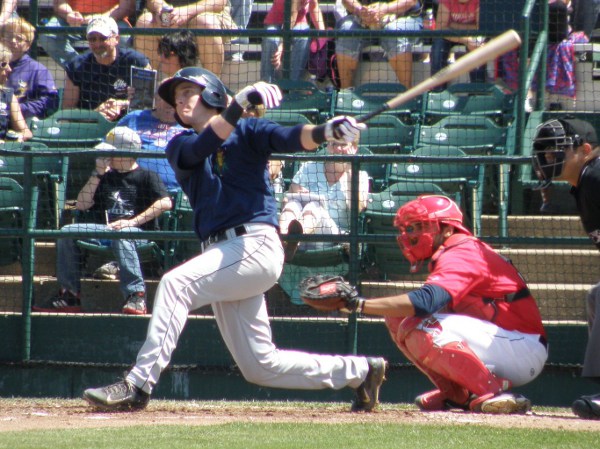
Digging deeper, it’s tough to find much in the offensive statistics that indicate a significant turnaround.
About half the club’s current position players hit a bit better in July than they had been hitting and about half had fallen off a notch, perhaps.
Catcher/DH Michael Quesada appears to have found his stroke and is hitting .270 in July, with a pair of home runs, after a dreadful June in which he managed just .150 with no extra-base hits.
Fellow catcher (turned primary right fielder) Alex Swim is hitting .364 in July after posting a .267 mark in June.
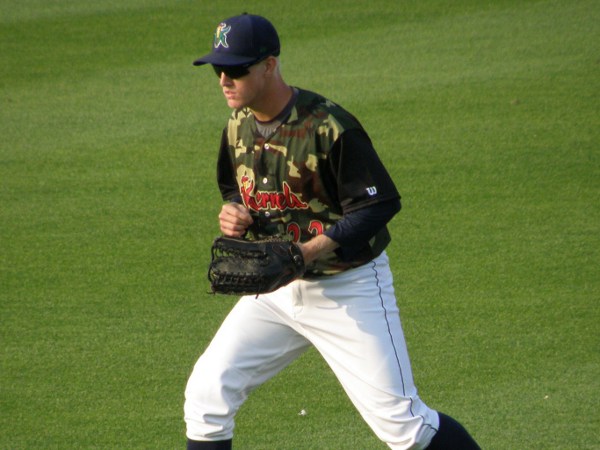
But a number of their teammates, including Mitch Garver and Chad Christensen, who have been among the team’s offensive leaders all season, have seen some of their numbers fade slightly in July, too, so it’s hard to credit this turnaround strictly to the offense.
Perhaps the most important contribution the offense has made has been its consistency.
Before Tuesday’s game with the Burlington Bees, Mauer emphasized the importance of that consistency.
“Knock on wood, we’ve had a steady core group,” Mauer said. “Obviously, (Jason) Kanzler was (promoted), but we’ve had that set core group for about four weeks.
“Position player wise, we haven’t really changed much. It’s pretty much the same group of guys other than Swim and Wade playing a bigger part. Christensen, Garver, Haar, 3-4-5, have been that way since about May.”
The pitching side of the ledger tells a slightly different story, however.
As the Kernels’ manager observed, “The starting pitching’s been good, bullpen’s been outstanding.”
Indeed.
Of the ten pitchers currently on the Kernels roster who made appearances in June and July for Cedar Rapids, nine dropped his ERA in July, as compared to June.
The tenth, reliever Dallas Gallant, couldn’t cut his. He had a 0.00 ERA in his three June appearances and has exactly the same 0.00 ERA through eight trips to the mound in July.
Fellow bullpen arm Jake Reed also has a perfect 0.00 ERA in his six appearances in July after posting a 4.50 mark in June.
Chris Mazza hasn’t been that perfect in relief. His July ERA is 0.69. It was 2.25 in June.
Jared Wilson has slashed his ERA from 4.60 in June to 1.84 in July.
Hudson Boyd did the same. He had a 10.00 in June and a 1.13 in July. (Boyd, however, was suspended on Tuesday for an unspecified period of time for violating team rules.)
The sharpest drop, however, has to be Nick Burdi, the Twins’ second round draft pick in June of this year. How can you beat a drop from infinity to 2.25?
Burdi made one infamous appearance upon joining the Kernels at the end of June in which he walked all four batters he faced and all four came around to score. In July, he has allowed just a pair of earned runs. He has also struck out 16 batters in his eight July innings, while walking just three.
The rotation arms are getting in to the act, as well.
Aaron Slegers, who leads the Kernels with 113.1 innings pitched this season, struggled in June to a 7.97 ERA in four starts. It sits at 1.96 through six starts in July.
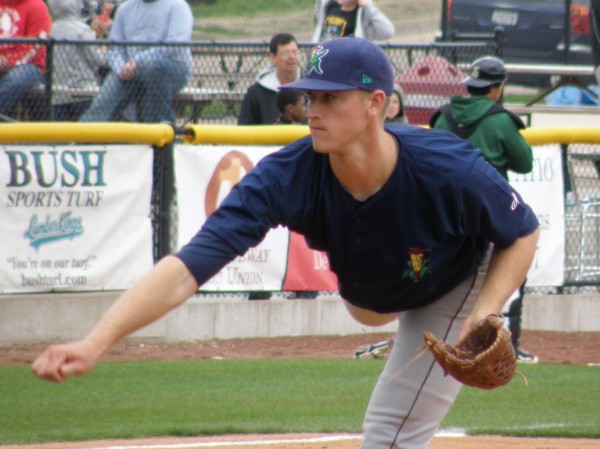
18 year old Lewis Thorpe posted a 6.50 ERA in his four June starts, but he’s cut that to 3.51 in his six starts this month.
Kohl Stewart, Minnesota’s top draft pick in 2013, had an ERA of 2.16 in June. That’s pretty good. In fact, it was better than Stewart posted in April or May. But he’s bettered that in July, posting at 1.32.
Stewart, unfortunately, finds himself on the 7-day Disabled List at the moment, with a sore shoulder.
His replacement in the rotation is Stephen Gonsalves, freshly arrived from the Twins’ Appalachian League affiliate in Elizabethton.
Gonsalves has made just one appearance for the Kernels since arriving, but the lefty threw six shutout innings against Dayton on Sunday.
Chih-Wei Hu, the 20 year old from Taiwan, wasn’t with the Kernels in June, but he’s posted a 1.50 ERA in four July starts for Cedar Rapids.
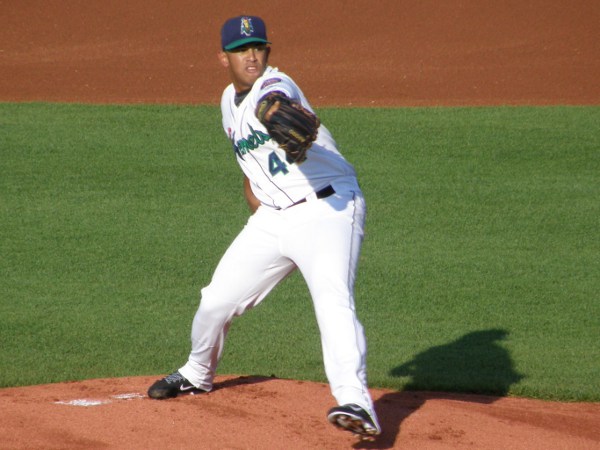
Earned Run Average is not the only important pitching statistic. Arguably, it’s not even the most important, especially among relief pitchers.
But when your entire pitching staff is slashing their ERA from one month to the next, that’s a sign that good things are happening for your team.
The Kernels have put themselves in to contention for postseason play, but they’re going to need to overcome some challenges over the final month to earn one of those final MWL playoff spots.
They may need Stewart to come back from his DL stint healthy and effective.
They lost their center fielder, Jason Kanzler, who was contributing with his bat and his glove, to promotion this week. He has been replaced by Max Murphy, who was tearing up the Appy League to the tune of a .371 batting average and nine home runs.
Murphy, however, got off to an inauspicious start, going 0-4 with three strikeouts and a walk in his Kernels debut on Tuesday.
The Twins’ high-A affiliate in Fort Myers is already postseason-bound, having clinched a spot in the first half of their Florida State League season. There’s certainly no assurance the Twins won’t tab more Kernels for promotion to aide the Miracle’s own playoff preparations. In fact, with the way some of the players in Cedar Rapids are performing this month, you can probably count on it.
However, right at this moment, the Kernels are in serious contention for the postseason and that’s not something many fans would have envisioned just three weeks ago.

